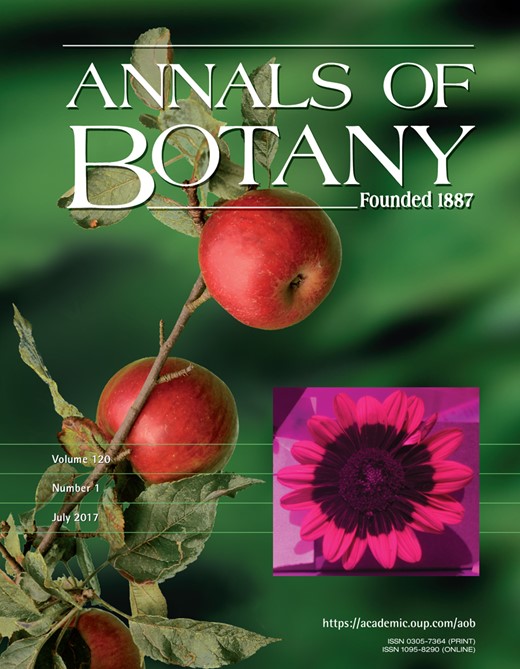
Cover image

Cover illustration: The inset cover image shows a flowerhead of the sunflower Helianthus argophyllus (Compositae or Asteraceae) photographed in ultraviolet light (UV, 320–380 nm). The central, dark, ‘bullseye’ is created by UV-absorbing pigments that are invisible to the human eye yet constitute a visible and highly attractive target for many pollinators. UV-absorbing pigments are expressed uniformly on disc floret lobes, and vary in the proportion expressed on the ray floret ligules. The quantitative trait loci (QTL) for floral UV patterning are identified and the simple, genetically independent architectures underlying proportional and absolute UV bullseye size should have the ability to respond to natural or artificial selection independently. See Moyers et al. (pp. 39–50).


